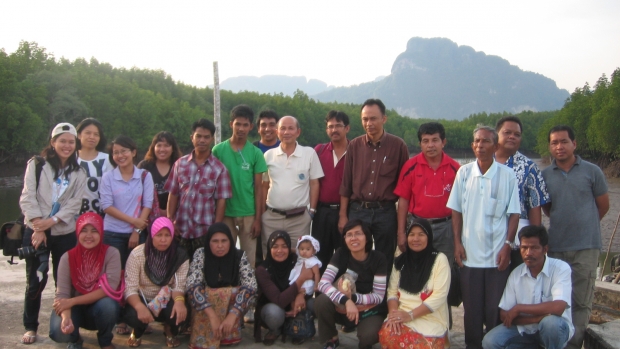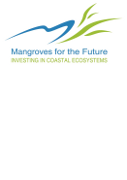Grants :: Small Grant Facilities :: Raising awareness and promoting the use of local knowledge in managing coastal resources
Raising awareness and promoting the use of local knowledge in managing coastal resources

Community in Koh Khiam village , Thailand © SSereepaowong , 2011
Objectives
This project aimed to contribute to the MFF strategies of building and encouraging the application of knowledge, and promoting improved environmental governance in coastal areas. Project activities consisted of building the capacity of local people by enhancing community learning and knowledge management.
Background
Koh Khiam is one of five target villages situated in the lower part of Phang Nga Bay. Like the other four villages, Koh Khiam lies between coconut and rubber plantations on its landward side and mangrove forests on its coastal side. The mangrove ecosystems fringing the target villages are drained and interlinked by four creeks. This area was once regarded as one of the richest coastal ecosystems in Thailand, with its extensive seagrass beds and coral reefs supporting a number of endangered aquatic species. In recent years its productivity and diversity have been degraded by development, prawn farming and other activities, but local people still earn their living mostly from small-scale fishing. Average yearly incomes are around US$2,000 per person.
Target beneficiaries
A total of 290 households from five target villages.
Outputs
- Establishment of a volunteer youth group to conserve coastal resources.
- An increase in community awareness. This allowed community members to articulate their environmental and livelihood concerns, and apply what they learned to:
- preventing the expansion of shrimp farms in the area;
- demarcating seven mangrove plots as community forests; and
- establishing two village mangrove learning centres.
Accomplishments and challenges
Local authorities recognized a 200-hectare mangrove area in one village as a community forest. Community forests in the four other villages still await approval. The project reached out to other community networks in Phuket, Phang Nga and Krabi provinces, and ultimately plans to reach as far as Ranong province on the north Andaman coast.
The project successfully involved women’s groups in its conservation activities. During these activities, women’s leaders and members of youth groups displayed the results of their efforts to use local natural resources as substitutes for bought goods.
Challenges
The project was unable to reach out to every group in the community. As a result, some members were unaware of its activities. Where possible, extra efforts were made to communicate with these groups.
Some project activities called for a relatively large amount of time which busy villagers were often unable to give.
Contributions to cross-cutting themes
Gender equality and communications
Representatives of the women’s group in each target village actively participated in events to present the products they were making with materials from their community forests. A photographic exhibition in the village mangrove learning centres records these activities for visitors.
Lessons Learned
Cooperation among various donors and agencies before launching projects is essential for smooth implementation and optimal results.
Project Facts
Country
Location
Phang Nga Bay, Phang Nga, Thailand
Topic
Duration
1st Oct 2009 to 31st Dec 2010
MFF Grant Amount
US$11,065
Co-financing Partner
Together, participating communities and the Restoration Project for Small-Scale Fishery in Andaman Coast made cash and in-kind contributions of US$17,258 and US$465 respectively.
Implementing Partner
Mr Thanu Nabnian
Project Coordinator
Andaman Project for Participatory
Restoration of Natural Resources
32/3 Behind City Hall, Soi Tampungchang,
Taichang, Muang,
Phang Nga 82000, Thailand
Tel: +66 81 5375467
Email: arr_2550@hotmail.com
Related Publications

Raising Awareness and Promoting Local Knowledge in Coastal Resource Management with People's Participation
Author: MFF Thailand
Posted on: 4th Dec 2013
Category:
Size: 407 KB

Raising and Conserving Habitat for Clams
Author: MFF Thailand
Posted on: 4th Dec 2013
Category:
Size: 696 KB
